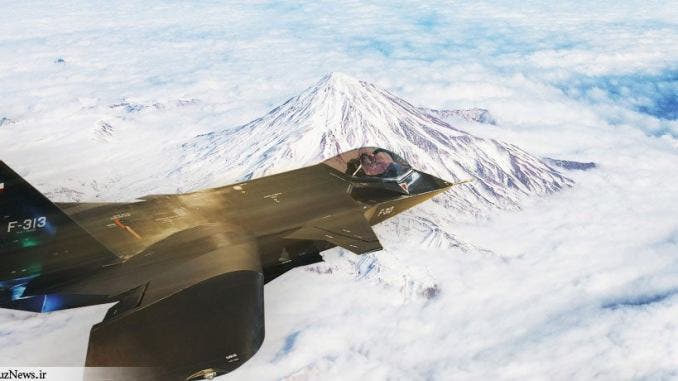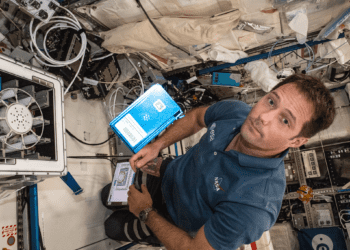Iran has a young but fledgling space program that’s making some pretty good progress considering the nation’s space agency was founded in 2005. However, a recent botched propaganda campaign severely hit Iran’s credibility after Minister of Information and Communications Technology Mohammad-Javad Azari Jahromi tweeted what he claimed to be an Iranian astronaut suit. In reality, the astronaut costume is a children’s Halloween costume that you can buy on Amazon for $20. Talk about an epic fail!
LOL!

Mohammad-Javad Azari Jahromi, who is a former intelligence officer, published his tweet with the fake astronaut costume and the caption “astronaut costume #bright_future” on Feb. 4. The tweet, which has since been deleted, quickly became the subject of ridicule on social media after others found that the flimsy astronaut suit was actually a modified children’s costume.
The circle-shaped protrusion and another rectangle-shaped one on the breast of the suit tipped people off that there was something peculiar at play. As it turns out, these areas correspond to the NASA logo and a name patch that had been stripped off the Halloween costume.

This isn’t the first time that Iran has embarrassed itself trying to boast about embellished capabilities. In 2013, Iran’s Revolutionary Guard Corps published a press release unveiling the so-called Qaher-313 stealth fighter. But what was supposed to be a frightening high-tech jet meant to sow panic in the hearts of Israel, the U.S., and their allies, was, in fact, a mock-up airplane.

The ruse was so plain and evident that everyone simply laughed at this pitiful attempt at muscle-flexing. Journalists have even found that the design of the jet doesn’t allow it to carry bombs or even fly for that matter. Meanwhile, Tehran insisted that the project was real and that it was already flying. What a joke!
“The western media policy is to tell you that the Qaher is a moke-up. This is a cheap talk and shows that enemies are worried about Iran’s advancements in several fields, including defense industries,” Iran’s Defence Minister at the time, Ahmad Vahidi, said in a statement.
Domestically, Iran’s propaganda is even worse. Last year, during the 40th anniversary of the Islamic Revolution in Iran, billboards in the country absurdly suggested that Iran was responsible for building the space shuttle!

Iran would be better off minding its own business and actually funding real science rather than using its extensive propaganda machine to bolster its image. Not only is this propaganda clearly not working, but it’s actually making Iran look foolish.
In the last decade, Iran has launched several satellites into orbit but its most recent track record hasn’t been the best. On February 9, the nation launched a communications satellite called Zafar 1 atop a Simorgh rocket but the satellite failed to reach orbit. Iran suffered another Simorgh launch failure in January 2019 and another one with a different rocket, the Safir, a month later. In August 2019, another rocket failed so horribly that its explosion at the launch site at the Imam Khomeini Space Center was spotted from space. Despite the setbacks, Mohammad-Javad Azari Jahromi put on a brave face.






